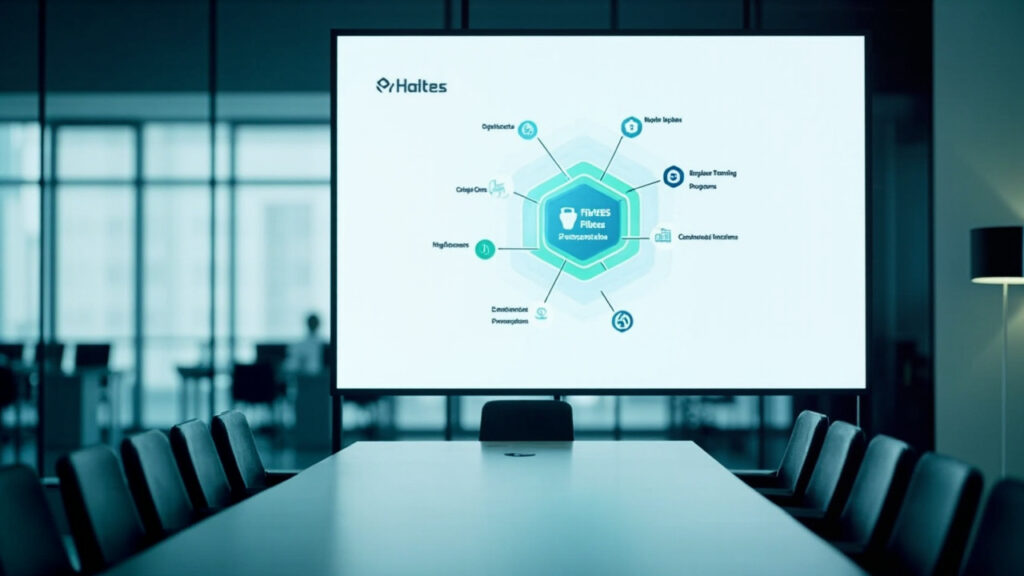In an era dominated by digital transformation, the specter of cybersecurity breaches has become more prominent than ever. Hackers, once considered mere nuisances, have evolved into sophisticated figures capable of significant economic and social disruption. This post delves into the multifaceted world of hackers: who they are, their motivations, the threats they pose, and the innovative defenses that can thwart their efforts. By understanding the depths of hacking, organizations can better prepare themselves against potential cybersecurity threats, ensuring a safer digital future.
Hackers are often portrayed as shadowy figures lurking behind screens, but the reality is far more complex. From ethical “white hats” who help secure our internet, to malicious “black hats” intent on exploitation, hackers have a profound impact on the technology landscape. This article will explore various facets of hacking, including its history, techniques, threats, and the cutting-edge solutions like GenQE that help combat these cyber adversaries.
As we navigate through these turbulent digital waters, understanding the intricacies of hacking is not just for IT professionals but for anyone who interacts with the digital world. Let’s uncover the layers of cybersecurity, the role of hackers, and how modern technology, including AI-driven tools like GenQE, is pivotal in providing robust defenses against these digital threats.
The Evolution of Hacking: From Playful Experimentation to Global Threat
The journey of hacking has roots deep in the curiosity-driven endeavors of early computer enthusiasts. Initially, hacking was synonymous with the intellectual challenge and the thrill of accessing hidden parts of computer systems. However, as technology permeated all aspects of life, the stakes have dramatically increased.
Early Days
In the 1970s and 1980s, hacking was primarily the domain of tech aficionados exploring the limits of what was possible with computing. These were the days of phone phreaking and the birth of the hacker ethic—a philosophy centered on open access to technology and information.
The Rise of Cybercrime
As the internet grew, so did the opportunities for hacking. The 1990s to 2000s saw a significant transformation from curiosity-driven hacking to the emergence of cybercrime. Hackers began to see the potential for financial gain through activities such as identity theft, corporate espionage, and the sale of confidential data.
State-Sponsored Hacking and Cyberwarfare
Today, hacking is not just a tool for individual or group financial gain but a weapon in the arsenals of nations. State-sponsored hacking initiatives have led to significant breaches, targeting everything from political entities to critical infrastructure.
Understanding Hacker Motivations and Profiles

To effectively defend against hackers, it’s crucial to understand their diverse motivations and the profiles that typify this clandestine community. Hackers vary widely in their objectives, from ethical hackers who aim to improve system security to malicious hackers who exploit vulnerabilities for personal or financial gain.
Ethical Hackers
Ethical hackers, or white hats, are cybersecurity professionals who use their skills to find vulnerabilities in systems and software before malicious hackers can exploit them. They are vital to the cybersecurity industry, providing an essential service that helps protect everyone from individual consumers to large corporations.
Black Hat Hackers
In contrast, black hat hackers are individuals who use their skills for illegal or malicious intent. They often target businesses to steal data, disrupt services, or even demand ransom payments through tactics like ransomware.
Grey Hat Hackers
Sitting between these two are grey hat hackers, who might violate ethical standards or laws but without the malicious intent of black hats. They often hack systems without permission to expose vulnerabilities, subsequently reporting them to the organization.
The Tools and Techniques of Modern Hackers

With the advancement of technology, the tools and methods used by hackers have become increasingly sophisticated. Understanding these can help in anticipating and mitigating potential breaches.
Malware and Ransomware
Malware remains a primary tool, with ransomware becoming particularly prevalent. These malicious programs can lock organizations out of their systems, with hackers demanding substantial ransoms for access restoration.
Phishing and Social Engineering
Hackers also frequently employ social engineering, especially phishing scams, to trick individuals into providing sensitive information like passwords or bank information.
Exploiting Software Vulnerabilities
Hackers constantly scan for software vulnerabilities, often exploiting them before organizations can patch them. This underscores the importance of regular software updates and vigilant security practices.
The Impact of Hacking on Businesses and Individuals

The consequences of hacking can be devastating, ranging from financial losses and reputational damage for businesses to significant personal consequences for individuals. The rise of the digital economy has only increased these risks, as more personal and corporate data is stored online than ever before.
Financial Ramifications
For businesses, the financial impact of hacking can include everything from theft of corporate data, loss of competitive advantage, direct theft of money, regulatory fines, and the cost of remedial actions to secure systems post-breach.
Reputational Damage
Beyond the immediate financial costs, companies face long-term reputational damage. Loss of consumer trust can have a lasting impact on business, often more damaging than the initial financial loss.
Personal Impact
For individuals, the effects of hacking can be equally severe, including identity theft, loss of personal data, and subsequent monetary loss. The emotional and psychological stress associated with being a victim of hacking can also not be underestimated.
Innovations in Cybersecurity: Combating Hackers with Advanced Technology

As hackers evolve, so too do the strategies and technologies designed to thwart them. Artificial intelligence and machine learning are at the forefront of modern cybersecurity, providing tools that can predict, prevent, and respond to cyber threats more effectively than ever before.
AI in Cybersecurity
AI-driven cybersecurity solutions can analyze vast amounts of data to identify patterns that may indicate a threat. By learning from each interaction, AI models can continuously improve, staying one step ahead of hackers.
GenQE: A Case Study in AI-Powered Cyber Defense
One exemplary tool in this fight is GenQE. This AI-powered software testing platform ensures that applications are not only functional but secure from vulnerabilities that could be exploited by hackers. By integrating with existing CI/CD pipelines and leveraging AI to automate and optimize test case generation and execution, GenQE helps protect against potential security flaws from the earliest stages of software development.
Building a Resilient Future: Strategies for Protecting Against Hackers

With the landscape of cyber threats continually evolving, it’s crucial for businesses and individuals to adopt robust cybersecurity strategies. This includes understanding the nature of threats, implementing comprehensive security measures, and staying informed about the latest cybersecurity developments.
Regular Updates and Patch Management
Ensuring that all software is up-to-date is a simple yet crucial step in protecting against hacking. Many attacks exploit known vulnerabilities that have already been patched in the latest software updates.
Comprehensive Security Practices
Organizations should adopt a layered security approach that includes firewalls, anti-virus software, secure configurations, and intrusion detection systems. Training employees on security best practices is also essential, as human error is a significant factor in many data breaches.
Continuous Monitoring and Response
Continuous monitoring of network traffic and regular security assessments can help identify and mitigate threats before they cause harm. Implementing an incident response plan ensures that businesses can react quickly and effectively to any security breach.
Conclusion: Staying One Step Ahead in the Digital Age

As we have explored, hackers present a dynamic and evolving threat to our digital security. Understanding their motivations, tactics, and the tools at their disposal is crucial for anyone looking to safeguard their information. Innovations like GenQE represent the future of cybersecurity, where AI and machine learning play pivotal roles in defending against these digital adversaries.
In this digital age, staying informed and proactive is the best strategy. Whether you are a business leader, IT professional, or everyday internet user, embracing advanced cybersecurity tools and practices is essential. As hackers evolve, so must our defenses.
For those interested in exploring how tools like GenQE can enhance their cybersecurity efforts, delving deeper into AI-powered solutions is a step towards a more secure digital future.
Discover More Innovative Solutions
Want to learn more about the tools and technologies discussed in this article? Explore how these innovations can be tailored to your specific needs and workflow requirements.
Our team of experts is available to answer your questions and provide personalized insights into how modern solutions like GenQE can address your specific challenges.